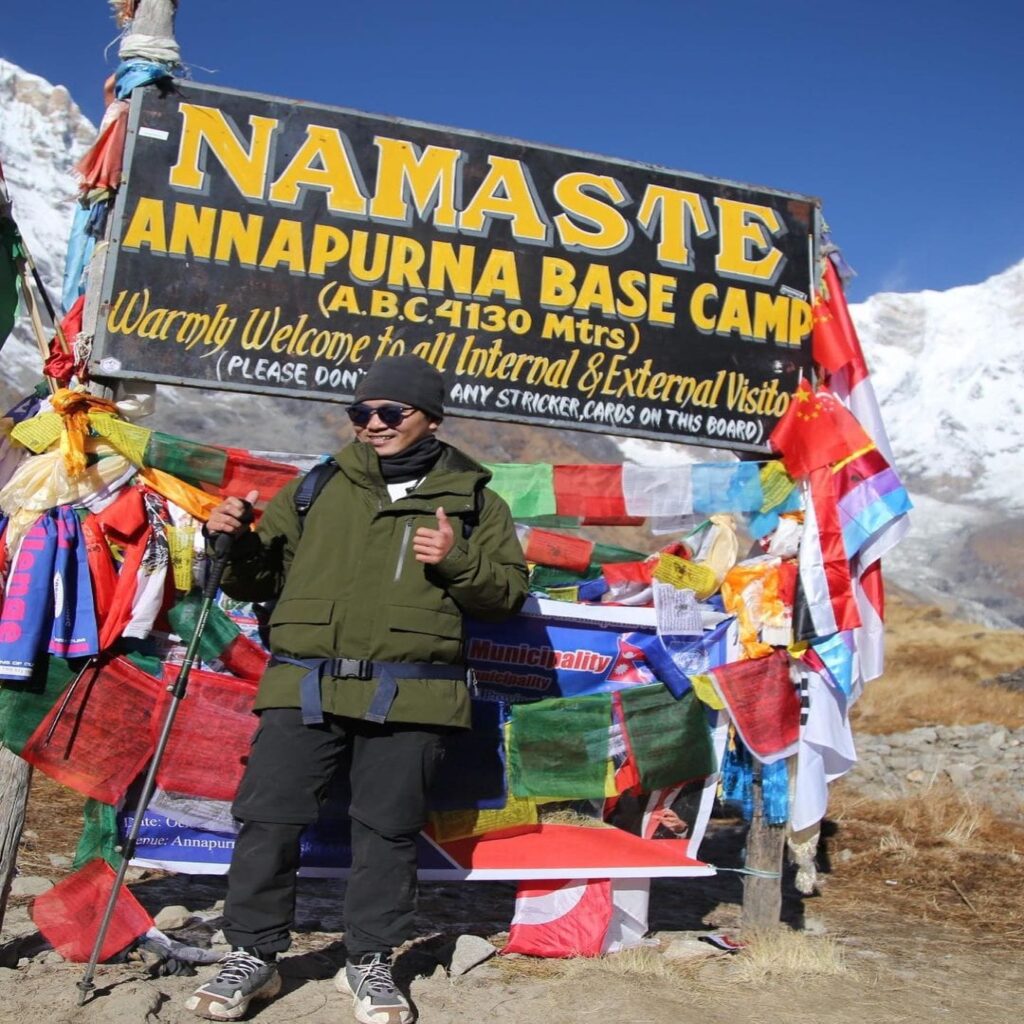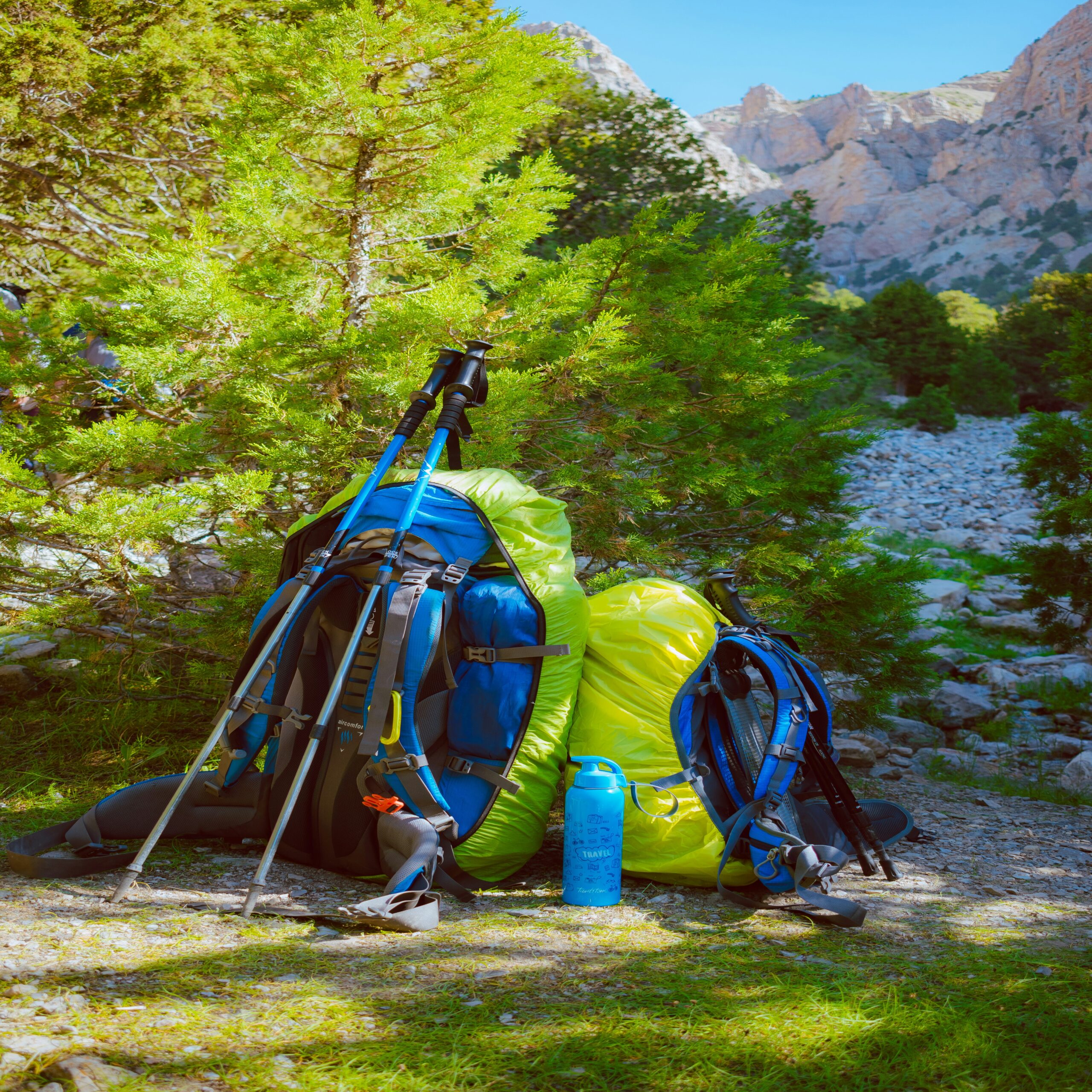As you trek to the Annapurna Base Camp, you’ll encounter snow-capped mountains, ancient villages, and vibrant flora and fauna. The trail leads you through remote villages where you can experience the warm hospitality of the locals and immerse yourself in their rich culture. Each step brings you closer to the Annapurna Sanctuary, a hidden gem nestled at the base of towering mountains, including Mt. Annapurna, the tenth highest mountain in the world.
The Annapurna Base Camp Trek offers a range of breathtaking vistas, from sunrise views over snow-covered peaks to panoramic landscapes dotted with terraced fields and quaint villages. If you’re an adventure enthusiast seeking an unforgettable experience, this trek should be at the top of your bucket list. So lace up your hiking boots, pack your camera, and get ready to embark on a journey of a lifetime to the mesmerizing Annapurna Base Camp.
Overview of the Annapurna region
The Annapurna region, located in central Nepal, is one of the most popular trekking destinations in the world. It is named after Mount Annapurna, the tenth highest mountain in the world, with an elevation of 8,091 meters. The region is renowned for its stunning natural beauty, diverse landscapes, and rich cultural heritage.
The Annapurna Base Camp Trek, also known as the Annapurna Sanctuary Trek, takes you deep into the heart of the Annapurna region. The trek begins in Nayapul, a small village near the city of Pokhara, and follows a well-established trail through lush forests, terraced fields, and traditional villages. As you ascend, the scenery becomes more dramatic, with snow-capped peaks, cascading waterfalls, and deep gorges.
Trekking routes and itineraries
There are multiple trekking routes and itineraries available for the Annapurna Base Camp Trek, catering to different preferences and fitness levels. The most popular route is the classic Annapurna Base Camp Trek, which takes around 10 to 14 days to complete. This route offers a perfect balance of natural beauty, cultural experiences, and manageable daily distances.
The trek typically starts in Nayapul and follows a well-marked trail through Tikhedhunga, Ghorepani, Tadapani, Chhomrong, and Deurali before reaching Annapurna Base Camp. Along the way, you’ll be rewarded with breathtaking views of mountains such as Machapuchare (Fishtail), Dhaulagiri, and of course, Annapurna.
If you have more time and want to explore the region in depth, you can opt for the Annapurna Circuit Trek. This trek circumnavigates the entire Annapurna massif and takes approximately 18 to 21 days to complete. It offers a more challenging and remote experience, passing through high mountain passes, remote villages, and diverse landscapes.
Physical preparation for the trek
The Annapurna Base Camp Trek is a moderate to strenuous trek, requiring a reasonable level of fitness and endurance. It is essential to prepare your body physically before embarking on this adventure. Regular exercise, especially cardiovascular activities like hiking, running, or cycling, can help improve your stamina and prepare you for the physical demands of the trek.
In addition to cardiovascular exercise, it is important to strengthen your leg muscles, as you will be walking for several hours each day. Exercises such as squats, lunges, and calf raises can help build strength in your lower body. It is also recommended to do some core exercises to improve balance and stability.
It is advisable to start your physical preparation at least 2-3 months before the trek, gradually increasing the intensity and duration of your workouts. This will not only improve your physical fitness but also give your body time to adapt to the altitude and reduce the risk of altitude sickness.
Required permits and documents
Before undertaking the Annapurna Base Camp Trek, it is important to obtain the necessary permits and documents. As a foreigner, you will need to obtain the Annapurna Conservation Area Permit (ACAP) and the Trekker’s Information Management System (TIMS) card.
The ACAP is an entry permit that allows you to trek in the Annapurna Conservation Area. It can be obtained from the Nepal Tourism Board office in Kathmandu or Pokhara, as well as from various authorized trekking agencies. The ACAP costs around USD 30 per person.
The TIMS card is a trekking registration card that provides information about trekkers and their trekking routes. It can be obtained from the Nepal Tourism Board office in Kathmandu or Pokhara or from registered trekking agencies. The TIMS card costs around USD 20 per person for individual trekkers and USD 10 per person for trekkers going through a registered trekking agency.
It is also important to carry a valid passport with at least 6 months of validity remaining and a few passport-sized photographs for the permit application process. Make sure to keep these documents safe throughout your trek, as you may be required to show them at various checkpoints along the trail.
Accommodation and food options along the trek
During the Annapurna Base Camp Trek, you will find a range of accommodation options to suit different budgets and preferences. Along the trail, there are teahouses or guesthouses that offer basic but comfortable lodging facilities. These teahouses typically provide rooms with twin beds or bunk beds, shared bathrooms, and communal dining areas.
Staying in teahouses is a unique experience that allows you to immerse yourself in the local culture and interact with fellow trekkers. The teahouse owners are known for their warm hospitality and delicious home-cooked meals. You can expect to enjoy traditional Nepali dishes like dal bhat (lentil soup with rice), momo (dumplings), and various vegetable curries.
It is advisable to carry some cash with you during the trek, as most teahouses do not accept credit cards. The cost of accommodation and food varies depending on the location and facilities available. On average, you can expect to spend around USD 20 to USD 30 per day on accommodation and meals.
Highlights and attractions of the Annapurna Base Camp Trek
The Annapurna Base Camp Trek offers a plethora of highlights and attractions that make it a truly unforgettable experience. Here are some of the key highlights along the trail:
- Ghorepani Poon Hill: Located at an altitude of 3,210 meters, Poon Hill is a popular viewpoint that offers breathtaking sunrise views over the Annapurna and Dhaulagiri mountain ranges. The panoramic vistas from here are simply awe-inspiring and a perfect reward for your early morning ascent.
- Natural Hot Springs: After a long day of trekking, you can soothe your tired muscles in the natural hot springs at Jhinu Danda. These hot springs are believed to have healing properties and provide a relaxing and rejuvenating experience amidst the tranquil surroundings.
- Machapuchare Base Camp: Nestled at the foot of the sacred Machapuchare mountain, the Machapuchare Base Camp offers stunning views of the iconic Fishtail peak. The campsite is surrounded by towering mountains and provides a sense of tranquility and serenity.
- Annapurna Base Camp: The ultimate highlight of the trek is reaching the Annapurna Base Camp, situated at an altitude of 4,130 meters. This natural amphitheater is surrounded by towering peaks, including the majestic Annapurna I. The sense of achievement and awe as you stand at the base of these giants is indescribable.

Safety precautions and tips for a successful trek
While the Annapurna Base Camp Trek is a breathtaking adventure, it is important to prioritize safety and take necessary precautions to ensure a successful trek. Here are some safety tips to keep in mind:
- Acclimatization: The trek involves gaining significant altitude, and it is crucial to acclimatize properly to avoid altitude sickness. Take your time, ascend gradually, and listen to your body. If you experience symptoms like headaches, dizziness, or shortness of breath, descend to a lower altitude and seek medical help if necessary.
- Hydration: Stay hydrated throughout the trek by drinking plenty of water. Dehydration can worsen altitude sickness symptoms and affect your overall well-being. Carry a reusable water bottle and use water purification tablets or filters to ensure safe drinking water.
- Sun Protection: The higher altitudes expose you to stronger and more intense sunlight. Protect yourself from sunburn and UV radiation by wearing sunscreen with a high SPF, sunglasses, and a wide-brimmed hat. Additionally, consider using lip balm with SPF to protect your lips.
- Trekking Gear: Invest in good quality trekking gear, including sturdy hiking boots, warm clothing, and a waterproof jacket. Carry a comfortable backpack with essentials like a first aid kit, headlamp, trekking poles, and extra layers of clothing. It is also advisable to carry a good quality sleeping bag for added comfort and warmth during the nights.
- Local Guidance: Engage the services of a knowledgeable guide or join a guided trekking group. Local guides are familiar with the terrain, weather conditions, and potential risks, and can provide valuable insights and assistance throughout the trek.
Best time to visit and weather conditions
The best time to undertake the Annapurna Base Camp Trek is during the spring (March to May) and autumn (September to November) seasons. During these months, the weather is generally stable, with clear skies, mild temperatures, and less chance of rainfall or snowfall.
Spring is considered the best time for trekking, as the trail is adorned with blooming rhododendrons and other colorful flowers. The weather is pleasant, with temperatures ranging from 10 to 20 degrees Celsius during the day and dropping to around 0 to 5 degrees Celsius at night.
Autumn is also a great time to trek, with clear skies offering stunning views of the mountains. The temperatures are slightly cooler than in spring, ranging from 5 to 15 degrees Celsius during the day and dropping to around -5 to 5 degrees Celsius at night.
It is important to note that the Annapurna region experiences monsoon season from June to August, with heavy rainfall and increased risks of landslides and avalanches. Winter (December to February) brings colder temperatures, snowfall, and limited facilities along the trail. Trekking during these seasons is possible but requires extra caution and proper gear.
Conclusion The unforgettable experience of reaching the Roof of the World
The Annapurna Base Camp Trek is an adventure of a lifetime that takes you to the Roof of the World. From the stunning landscapes and snow-capped mountains to the warm hospitality of the locals and rich cultural experiences, every step of the trek is filled with awe and wonder.
As you make your way to the Annapurna Base Camp, you’ll be immersed in the beauty of nature and challenged physically and mentally. The sense of accomplishment and joy as you stand at the base of the majestic Annapurna is unparalleled.
So, lace up your hiking boots, pack your camera, and get ready to embark on a journey that will leave you with memories to last a lifetime. The Annapurna Base Camp Trek is waiting to take you to new heights and show you the true meaning of natural beauty.
Experience the awe-inspiring beauty of Annapurna Base Camp trek with our trekking adventures! Subscribe to our YouTube channel today for exclusive behind-the-scenes footage, expert tips, and breathtaking glimpses of our journeys to destinations like Namtso Lake. Join us as we explore the sacred landscapes of Annapurna Base Camp trek and embark on unforgettable adventures. Don’t miss out – subscribe now and start your journey with us

